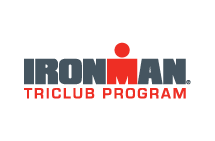- Join Image
8 Ways to Handle Swimming in Cold Water
By Kevin Koskella For Active.com
I’ll be the first to say that I hate the cold. Cold air and especially cold water. During my 14 years of competitive swimming, I never once got used to or enjoyed jumping into a cold pool.
These days, I prefer open water swimming to pool swimming, but refuse to get in our local Pacific Ocean until it gets up around 66 degrees or so. Anything below that and I’m known to turn various shades of purple.
Cold water can not only be unpleasant and draining, it can also be dangerous. Even here in southern California, swimmers have had to be rescued because they couldn’t cope with the frigid conditions. It’s always best to do your open water swim training with a partner, just in case.
There are many triathlons where cold water is part of the challenge—especially the early-season ones in April and May (and even mid-summer in Alaska and the Pacific Northwest). What can you do about cold water, other than be uncomfortable, get an ice cream headache, and use up lots of your body’s energy just trying to stay warm?
Here is a list of tips to minimize the negative effects and the uncomfortable feelings that can result from cold water swimming.
1. Wear two caps. You lose most of your heat through your head, and doubling up your “capage” helps you to keep your heat in.
2. Wear a neoprene cap. Neoprene is better suited for cold water than standard latex.
3. You also lose lots of heat through your feet. Neoprene socks are a good idea, but you may want to use these mostly on training swims, as they can be a hassle when it comes to transitioning to your bike on race day.
4. Wear a wetsuit—but more specifically, a full suit. The sleeveless suits allow heat to escape through your armpits. I learned this the hard way when doing the Alcatraz swim in 52 degree water with a sleeveless, Farmer John-style suit. By the time I finished, I was in the early stages of frostbite. Keep in mind that, according to USA Triathlon rules, wetsuits are allowed at triathlons with water temperatures of 75 degrees Fahrenheit or below.
5. Put in earplugs. When the water drops below 60 degrees, I think earplugs become necessary—and they do work well in keeping your core temperature up.
6. Practice swimming in cold water in the weeks before your race. At first, it can be a shock to your system that can lead to hyperventilating or a panicked feeling. You will want to swim slowly until you catch your breath. The first time you experience this it can throw you off, but with practice you will get used to it and be able to relax into your swim.
7. Do a significant warm-up the morning of your race (10 to 15 minutes, minimum). This will minimize the shock effect that cold water can have and allow you to get into a stroke rhythm much faster.
8. Blow bubbles before taking off on your swim. When the cold water hits your face, the shock causes your lungs to contract, causing breathing problems. Go waist deep into the water and submerge your face to blow bubbles. This helps alleviate the shock of the cold water.
Use these tips not only to help your body tolerate cold water swimming, but to use it to your advantage and gain a leg up on your competition.
Kevin operates the website www.TriSwimCoach.com, a resource for beginning through intermediate level triathletes looking for help with swimming. The site features a free email newsletter offering tips and articles on triathlon swimming. Kevin has also written an electronic book titled The Complete Guide to Triathlon Swimming which is sold on his website in downloadable form.
This article originally appeared on Active.com — your source for event information, training plans, expert advice, and everything you need to connect with the sport you love.
The views expressed in this article are the opinion of the author and not necessarily the practices of USA Triathlon. Before starting any new diet or exercise program, you should check with your physician and/or coach.


